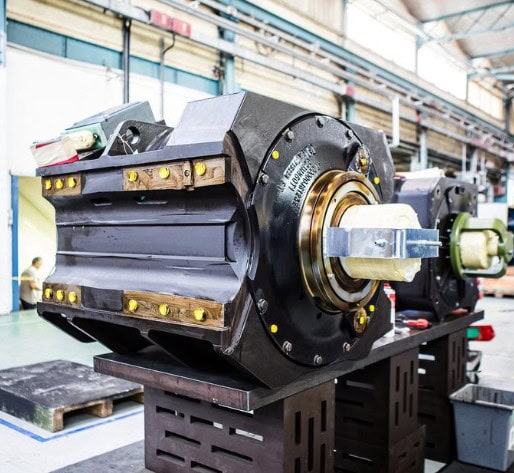**Permanent Magnet Motor (PMM)**
**Core Characteristics and Key Components of Permanent Magnet Motors** Permanent magnet motors use permanent magnets (PM) instead of traditional excitation windings (which generate magnetic fields through current), simplifying the structure and improving efficiency. Below are the core related terms: #### **
1. Types** – **Permanent Magnet Synchronous Motor (PMSM)** The rotor contains permanent magnets, and the rotational speed is synchronized with the stator magnetic field. It is commonly used in high-precision control scenarios (e.g., servo systems, electric vehicle drives). – **Permanent Magnet DC Motor (PMDC Motor)** Available in brushed (with mechanical commutators and brushes) or brushless (Brushless DC Motor, BLDC, using electronic commutation) types, often used in small devices (e.g., home appliances, drones). #### **
2. Key Components** | **Chinese** | **English** | **Description** |
| English | Description |
| Permanent Magnet (PM) | Typically made of rare-earth materials like neodymium-iron-boron (NdFeB) or samarium-cobalt (SmCo), fixed on the rotor to generate a magnetic field. |
| Stator Core (Silicon Steel Laminations) | Composed of stacked silicon steel laminations, supporting stator windings and guiding the magnetic path. |
| Stator Winding | Conducts alternating current (for PMSM) or direct current (for PMDC/BLDC), interacting with the permanent magnet’s magnetic field to produce torque. |
| Rotor (with Inset/Surface PMs) | Permanent magnets can be surface-mounted or inset/buried, affecting magnetic circuit design. |
| Electronic Commutator | In brushless permanent magnet motors (e.g., BLDC), switches the phase of stator current via sensors (e.g., Hall sensors) or sensorless control algorithms, replacing mechanical commutators. |
| Encoder | Used for precise control of PMSM, providing feedback on rotor position and speed (e.g., resolvers, optical encoders). |
| Shaft | Transmits torque, connecting the rotor to the load. |
| Bearing | Supports rotor rotation; deep groove ball bearings are commonly used. |
3. Core Advantages** – **High efficiency**: No excitation winding losses, especially excellent in low-speed and partial-load conditions. – **Compact structure**: Eliminates the excitation system, resulting in a smaller size and lighter weight. – **High power density**: Suitable for scenarios sensitive to space and weight (e.g., electric vehicles, drones). – **Low maintenance**: Brushless types (BLDC/PMSM) require no brush replacement, offering high reliability. #### **
4. Typical Applications** – Electric vehicle drive motors, servo motors, industrial robots, energy-efficient equipment for fans/pumps, home appliances (air conditioning compressors, refrigerator motors), consumer electronics (drones, power tools), etc.
